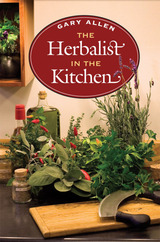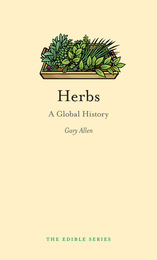
Food preservation rests in a simple problem: food tends to come in concentrated periods of abundance and then quickly spoil. Today we might pump it full of preservatives or throw it in the freezer, but for most of our time eating the things that the earth provides, we haven’t had these luxuries. As Allen shows, that’s been a wonderful limitation: our ancestors, knowing next to nothing about organic chemistry, found consistent techniques not only to preserve the foods they grew but to alter them—to delicious effects. Wine is more than old grape juice, cheese more than spoiled milk. Allen details how these transformations resulted in new flavors, textures, and, ultimately, new ways of defining the tastes and culture of a community, which passed down its knowledge from generation to generation. Exploring the history and science of preservation, he examines all the major techniques—from drying to smoking to salting to canning to fermentation—reveling in the cornucopia of different foods they have produced. Allaying the fears of the squeamish, he serves up easy-to-do historic and modern recipes that will help any home cook participate in one of culinary history’s most hallowed traditions.

The foodie's ultimate herbal encyclopedia
Created as the ideal reference for anyone with a serious interest in cooking with herbs, spices, or related plant materials, The Herbalist in the Kitchen is truly encyclopedic in scope. It provides complete information about the uses, botany, toxicity, and flavor chemistry of herbs, as well as a listing for nearly every name that an ingredient is known by around the world.
Even including herbs and spices not yet seen in the United States (but likely to be featured in recipes for adventurous cooks soon), The Herbalist in the Kitchen is organized into one hundred and four sections, each consisting of a single botanical family. The book provides all available information about the chemical compounds responsible for a plant's characteristic taste and scent, which allows cooks to consider new subtleties and potential alternatives. For instance, the primary flavoring ingredient of cloves is eugenol; when a cook knows that bay leaves also contain eugenol, a range of exciting substitutions becomes clear. The Herbalist in the Kitchen also provides guidance about measuring herbs, enabling readers to understand the dated measuring standards from antique cookbooks.
A volume in The Food Series, edited by Andrew W. Smith

Salsa and guacamole wouldn’t be the same without cilantro, and you can’t make pizza without oregano or a mojito without mint. You can use peppermint to settle an upset stomach, ease arthritis pain with stinging nettle, and heal burns and wounds with aloe vera. And then there is cannabis—perhaps the most notorious and divisive herb of all. Despite the fact that herbs are often little more than weeds, cultures around the globe have found hundreds of uses for them, employing them in everything from ancient medicines to savory dishes. While much has been written on cooking and healing with herbs, little has been told about the history of the plants themselves and the incredible journeys they have made.

READERS
Browse our collection.
PUBLISHERS
See BiblioVault's publisher services.
STUDENT SERVICES
Files for college accessibility offices.
UChicago Accessibility Resources
home | accessibility | search | about | contact us
BiblioVault ® 2001 - 2024
The University of Chicago Press









